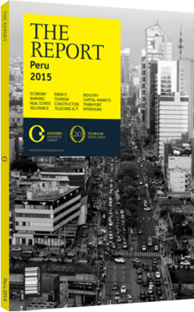Daniel Schydlowsky, Superintendent for Banks, Insurance and Pension Funds: Interview

Interview: Daniel Schydlowsky
Just one in five Peruvians has a bank account. To what extent does this limit banking sector growth?
DANIEL SCHYDLOWSKY: Low banking penetration figures are the result of many factors. In the case of Peru, geographic dispersion, a high level of informality, a lack of trust in the financial system and a low level of financial education are at play. Despite this, the number of financial users has doubled since 2009, which is substantial. Loans have increased to cover around 30% of adults, thanks to the combined efforts of financial institutions and more flexible regulations. Peru’s financial system is in full compliance with international standards and is making great strides towards inclusion, with over 6m debtors. However, there is still a lot to be done.
Financial institutions are looking to increase penetration by encouraging more establishments to reach a larger share of the population. There are currently more than 30,000 access points, including branches, ATMs and banking agents. This, combined with electronic banking, will see penetration rates increase considerably and help formalise the economy.
What can be done to address the decline in the important microfinance credit sector?
SCHYDLOWSKY: The biggest challenge for an economy with informality levels as high as Peru is creating the parameters for safely handing out micro-loans. Despite the country’s emergence as a regional power, the granting of micro-loans has diminished recently due to the downturn of the economy and the repeated revision of GDP growth estimates.
To turn this around a new method for awarding loans has been devised to expedite timetables and lower costs. Four financial institutions are already using this method, which is based on psychometric parameters, with very positive results.
This new method is expected to generate an increase in the quantity and penetration of micro-loans, as well as lower operational costs, which will favourably impact interest rates and create better financial conditions.
How can Peru stimulate insurance sector growth?
SCHYDLOWSKY: Peru operated under the same insurance law from 1902 to 2012, effectively rendering the regulations largely obsolete. This had a negative effect on companies potentially wanting to come to Peru. In 2012 the Congress finally approved a law to update the regulations. The ratio of premiums-to-GDP in the country has increased to 1.74% in 2014, up from 1.2% in 2008. The industry’s cumulative growth since 2010 stands at over 50%, which is very significant, despite having grown from a low starting point.
There are currently 18 insurance companies operating in Peru, up from 15 in 2013. Four new firms are set to join the market in 2015, effectively increasing the number of players by around 50% in just two years. The sector will also benefit from greater banking penetration, as financial institutions are a good tool for selling insurance products en masse.
Can mobile phones help expand financial services?
SCHYDLOWSKY: The potential for applying technology to the financial system is huge. There are approximately 31m mobile phones in the country, which is more than one per capita. Electronic banking will be available in the near future, with an advanced platform for e-money set to be operational as soon as July 2015. The project has a high likelihood of success, as it is being developed by the financial sector as a whole, not just individual banking institutions.
Smaller entities, such as microfinance institutions, will also be included in the platform, with equal access for all users and operator. This means full interconnectivity and full interoperability, an advanced undertaking that no other country has implemented, not even Kenya. Our Multisectoral Committee for Financial Inclusion, formalised in February 2014, is charged with designing and implementing a national strategy for financial inclusion. Efforts include the promotion of innovative payment systems, such as electronic money, as well as other ways to increase financial inclusion.
You have reached the limit of premium articles you can view for free.
Choose from the options below to purchase print or digital editions of our Reports. You can also purchase a website subscription giving you unlimited access to all of our Reports online for 12 months.
If you have already purchased this Report or have a website subscription, please login to continue.

